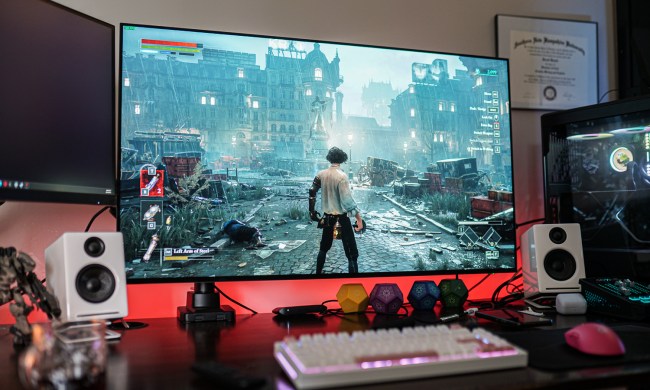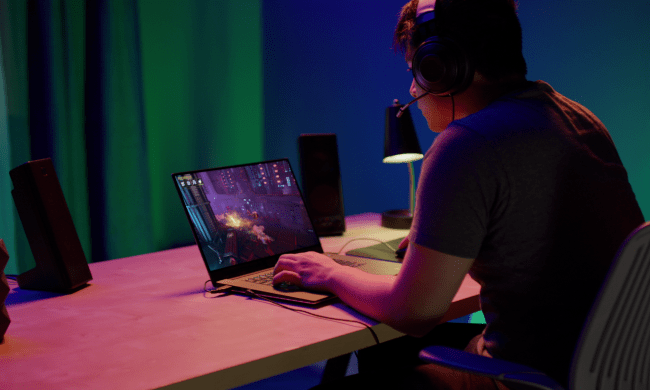 Nvidia
Nvidia
Nvidia’s latest GeForce 566.03 WHQL driver update was released two days ago, and the company has now acknowledged a peculiar issue. According to a report by Overclock3D, users of Corsair’s iCUE software and Bluestacks, may face “higher than normal CPU usage” and are advised not to update to the latest graphics driver update.
Corsair’s iCUE software integrates the company’s compatible hardware into a single interface, enabling users to control RGB lighting, adjust fan speeds, create macros, and monitor system performance. Bluestacks, on the other hand, is an Android emulator for Windows, primarily used for gaming and app development.
While it is strange that a GPU driver is causing high CPU usage, the performance drop shouldn’t be noticeable considering how fast modern CPUs are.
Get your weekly teardown of the tech behind PC gaming
Corsair has also noticed the issue and advises users to roll back their GeForce drivers to version 561.09, at least until Nvidia comes up with a solution.
For NVIDIA users – As a temporary workaround, try rolling back your NVIDIA Drivers to 561.09 while this issue is being investigated. https://t.co/ku94w7z8Wd
— CORSAIR (@CORSAIR) October 23, 2024
You can roll back Nvidia’s GeForce drivers by going through Device Manager, which is the quickest way to revert to an older driver. Start by opening Device Manager and expanding the Display adapters section. Right-click on your Nvidia GPU and select Properties, then navigate to the Driver tab. From there, click the Roll Back Driver button. This option is only available if you’ve installed a newer driver recently, and it will restore the previous version of the driver that worked without issues.
Another method for rolling back Nvidia drivers is by manually downloading and installing a previous driver, but it’s often recommended to use a tool like Display Driver Uninstaller (DDU) for a clean and thorough removal of the problematic driver. First, download DDU from a trusted source, and run it in Safe Mode to completely remove all traces of the current driver from your system. This ensures that any residual files or settings from the faulty driver are eliminated, preventing conflicts with the older driver you want to install.
After using DDU, visit the Nvidia driver archive to download an older driver version that worked well for your system. When running the installation, select the Custom (Advanced) option and check Clean Installation to ensure no remnants of the previous driver remain.

Kunal Khullar is a computing writer at Digital Trends who contributes to various topics, including CPUs, GPUs, monitors, and…
Why Keychron’s latest keyboard just became my daily driver

We've seen an influx of high-end gaming keyboards like the Asus ROG Azoth over the last few years, but Keychron has something different with the Q1 HE. It takes the wildly popular Q1 design and updates it with Hall Effect switches and a 2.4GHz wireless connection, taking the solid foundation of a mechanical keyboard and tricking it out with features built for gaming.
The end result is a keyboard that feels as it good as it looks, and that comes with plenty of features in tow. Although it's expensive at $220, you can't find another keyboard around this price that boasts everything the Q1 HE does. However, you'll have to deal with a few rough patches to unlock everything the Q1 HE has to offer.
A test of patience
Read more
Nvidia DLSS is amazing, but only if you use it the right way

Nvidia's Deep Learning Super Sampling, or DLSS, has become a cornerstone feature of modern PC games. It started as a way to boost your performance by rendering a game at a lower resolution, but the prominence and popularity of DLSS have prompted Nvidia to add even more features under the name.
Today, DLSS incorporates several different features, all of which leverage AI to boost performance and/or image quality. It can be intimidating if you're a new RTX user, so I'm here to break down all of the increases of DLSS in 2024 and how you can best leverage it in supported games.
The many features of DLSS
Read more
Nvidia just made GeForce Now so much better

Nvidia has just added adaptive refresh rates to GeForce Now, its cloud gaming service. The new tech, dubbed Cloud G-Sync, works on PCs with Nvidia GPUs first and foremost , but also on Macs. These include Macs with Apple Silicon, as well as older models with Intel CPUs and AMD GPUs. On the Windows PC side more broadly, Intel and AMD GPUs will not be supported right now. Nvidia has also made one more change to GeForce Now that makes it a lot easier to try out -- it introduced day passes.
Cloud G-Sync's variable refresh rate (VRR) feature will sync your monitor's refresh rate to match the frame rates you're hitting while gaming with GeForce Now. Nvidia's new cloud solution also uses Reflex to lower latency regardless of frame rates. Enabling VRR in GeForce Now should provide a major boost by reducing screen tearing and stuttering, improving the overall gaming experience on PCs and laptops that normally can't keep up with some titles. To pull this off, Nvidia uses its proprietary RTX 4080 SuperPODs.
Read more





















 English (US) ·
English (US) ·